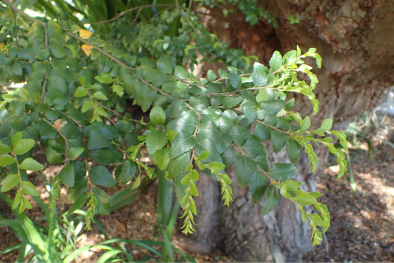Ancient origins
The island state of Tasmania sits 240 kilometres south of the Australian mainland, but it didn’t always. It was once sandwiched between Australia and Antarctica, when all the world’s land was squashed into the supercontinent Pangaea.

A reconstruction of the supercontinent Pangaea shows the hypothesised distribution of continents around 1.45 billion years ago. Tasmania can be seen sandwiched between North America and Antarctica near the North Pole. (Photo credit: From a research project by UTAS phd student Jacob Mulder.)

This image depicts the possible drift of continents, after the time about 1.45 billion years ago when Tasmania was sandwiched between North America and Antarctica near the North Pole. (Photo credit: From a research project by UTAS phd student Jacob Mulder.)
As they moved, their climates changed. The species that lived on them changed too, evolving to meet the demands of their new homes.
Tasmania ended up in a curious place. Far to its south, Antarctica became ice-covered. To its north, much of Australia grew hotter and dryer as it shifted nearer to the equator. Tasmania, with its southerly latitude and oceanic surroundings, stayed mild and humid.
Species that couldn’t cope with climatic extremes persisted there. Myrtle Beech (Nothofagus cunninghamii), for example, are rainforest canopy trees that thrive in this temperate environment. They live nowhere else, save for a small area at the southern tip of the Australian mainland. King Billy Pines (Athrotaxis selaginoides) are even more restricted, living only at elevation in the Tasmanian mountains.

Myrtle Beech (Photo credit: Krzysztof Ziarnek)
Continental drift made Tasmania a sort of evolutionary refuge, where species could remain largely unchanged for millions of years. Recently, through a completely different process, it has become a refuge of another sort, too.
Not all species are as limited by climate as Myrtle Beech or King Billy Pines. Many plants and animals live on both Tasmania and mainland Australia, unbothered by their differences. For at least three such species, though, that changed a little over 3000 years ago.
Three animals; three different paths

Tasmanian Tigers (Photo credit: Baker, E.J. Keller)

Tasmanian Nativehen (Photo credit: Rob Knight)
Tasmanian Tigers, Tasmanian Nativehens, and Tasmanian Devils all disappeared from the mainland around that time, remaining only on the island after which they would be named. Introduced Dingoes may be to blame, along with a growing human population and some sudden climatic change. Safe from these pressures, Tasmania became the only stronghold for these imperiled creatures.
For Tasmanian Tigers, sadly, the heart-shaped island would also be the site of their demise. European settlers blamed it for attacks on sheep and poultry, and hunted it to extinction by the 1930s.
Tasmanian Nativehens remain common in Tasmania. They prefer agricultural areas, where they graze on low vegetation, seeds, and insects. They are flightless, so Tasmania provides a safe haven from introduced predators like Dingoes and Red Foxes. A return to their former range on Australia is unlikely for these defenseless birds, but as long as Tasmania remains fox- and Dingo-free, their future may be secure.
Tasmanian Devils may be the most famous of the island’s inhabitants. So strongly are they associated with their namesake homeland that many may not realize that they once roamed the entire continent. Yet they did, and one day they may again.
A cautiously hopeful future
The devils’ time in Tasmania has not been without difficulty. Their population has fluctuated, and most recently has plummeted as a result of a transmissible cancer called Devil Facial Tumor Disease.

Tasmanian Devil (Photo credit: Jesse Bonde)
To safeguard Tasmanian Devils, the Australian and Tasmanian governments administer the Save the Tasmanian Devil Program. Among other things, this involves keeping an insurance population of disease-free devils in captivity. They can be used to bolster the wild population, improve genetic diversity, and even repopulate.
Part of this population lives on the Australian mainland in a breeding program called Aussie Ark. In 2020, along with several partners, Aussie Ark released 26 devils into a large sanctuary north of Sydney — the first wild Tasmanian Devils in mainland Australia in over 3000 years! More individuals have since been released, and they are now beginning to breed on their own.
Aussie Ark has an ambitious vision for these mainland devils. They believe the animals may rebalance the environment around them, both in their role as a scavenger, and as a predator that might help control introduced species.
It’s too early to say whether Tasmanian Devils will once again roam across the Australian continent, but it’s an exciting and encouraging prospect. If the project is successful, it may provide a blueprint for other such reintroduction efforts. For now though, if you want to see devils in the wild, Tasmania is the place to go.
Learn more about our upcoming tour to Tasmania
Remote Tasmania
Wildlife of rainforests, moors, and rugged coasts
With Martin Cohen and Scott Roberts
November 20 – December 2, 2025
Wildlife of rainforests, moors, and rugged coasts
With Martin Cohen and Scott Roberts
November 20 – December 2, 2025


